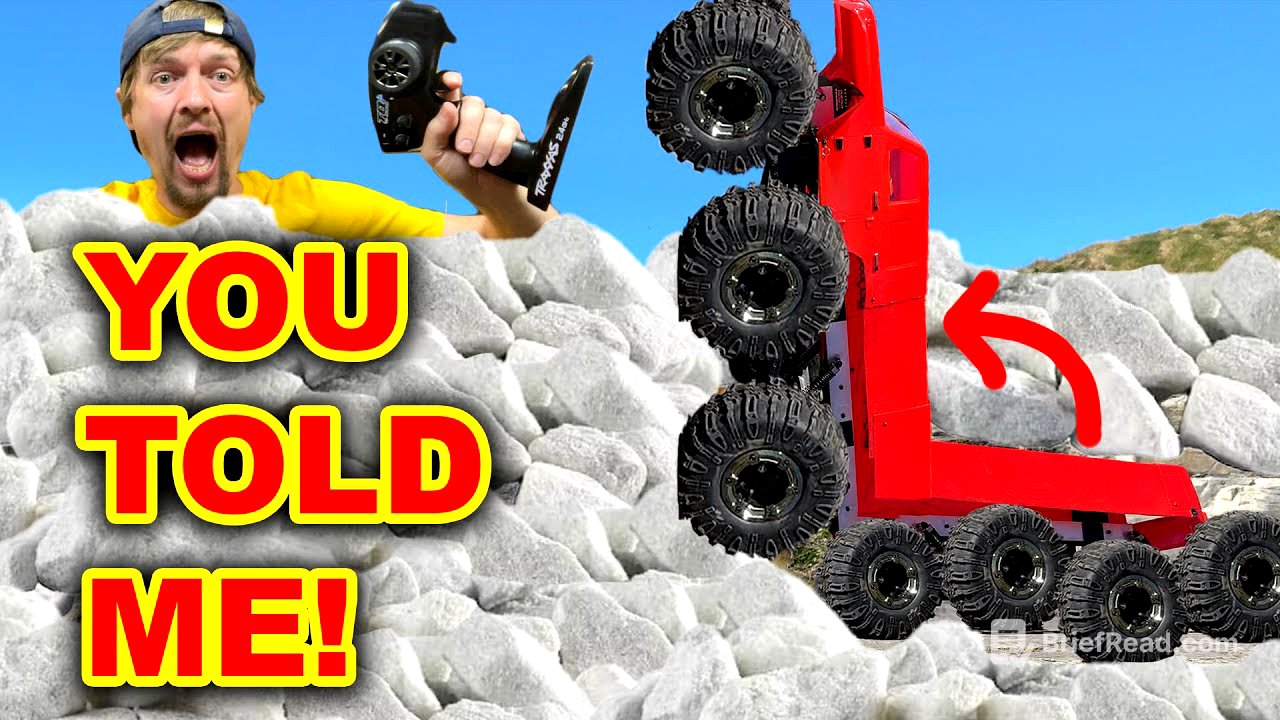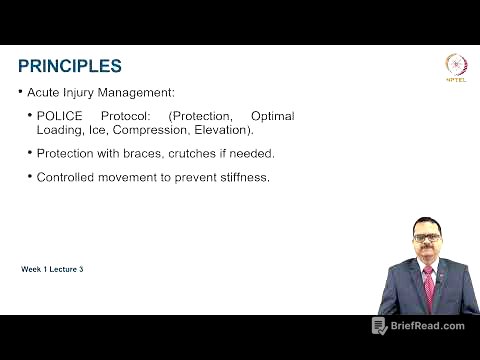TLDR;
In this video, Kevin Talbot experiments with hinging the Rock Sausage, a 12-wheeled RC crawler, to improve its performance. He tests different configurations, including a simple hinge, a pivot ball joint, and a servo-controlled hinge, to see if they enhance the crawler's ability to navigate obstacles. Ultimately, the initial hinging attempts prove less effective than the rigid design, but the experiment leads to exploring a servo-controlled system for future improvements.
- Hinging the Rock Sausage initially worsens its performance on obstacles.
- A pivot ball joint is tested to limit movement and improve articulation.
- A servo-controlled hinge is explored for adjustable height, but faces power and durability issues.
Intro and Initial Hinging Concept [0:00]
Kevin Talbot revisits the Rock Sausage, a 12-wheeled RC crawler, based on viewer suggestions to hinge it for better terrain adaptation and potentially implement semi-truck-style steering. He explains that while a hinged design might seem beneficial for keeping more wheels on the ground and increasing traction, he anticipates it could behave like two separate crawlers, leading to instability. The video aims to test these theories by modifying the Rock Sausage and assessing its performance on various obstacles. Talbot also mentions a giveaway of his 10 favourite RC cars, worth $10,000, and a free giveaway of other RC cars, with details in the description box.
Modifying the Rock Sausage with a Simple Hinge [2:36]
Talbot begins modifying the Rock Sausage by cutting it in half to implement a hinge. He acknowledges this is a prototype and plans for a more refined build later with metal axles, better servos, and improved wheels and tyres. For the initial test, he uses a simple bolt and nut to create a hinge, allowing the two halves to tilt. He then tests the hinged Rock Sausage on various obstacles to compare its performance against the original rigid design.
Testing the Simple Hinge [4:16]
The initial tests with the simple hinge reveal that the Rock Sausage performs worse on certain obstacles compared to its rigid form. Specifically, it struggles with steps and a ditch, where the hinge causes it to lose momentum and stability. Talbot observes that the bending action prevents the crawler from maintaining a straight, upward trajectory, leading to decreased performance.
Introducing the Pivot Ball Joint [7:11]
After the disappointing results with the simple hinge, Talbot introduces a pivot ball joint, 3D-printed by Scotty, to limit the articulation and prevent the crawler from flopping over. He explains that this pivot ball will allow movement in any direction while providing some stability. Additionally, he mentions an alternative idea of using a servo to control the height of the hinge, which they plan to test later in the video.
Testing the Pivot Ball Joint and Steering Issues [7:52]
With the pivot ball joint installed, Talbot notices steering issues, as the wheels struggle to steer in the desired direction. He experiments with different steering modes, including four-wheel steering, crab steer, and rear steer, but none of them significantly improve the steering. He considers swapping the direction of the servos to potentially resolve the issue but anticipates that it might cause the wheels to fight against each other. Disconnecting the middle servos and relying solely on front and rear steering also proves ineffective, leading Talbot to conclude that the crawler performed better in its original, rigid configuration.
Implementing and Testing the Servo-Controlled Hinge [10:04]
Talbot moves on to testing the servo-controlled hinge, hoping it will offer the best of both worlds by allowing adjustable flex. However, during testing, the 3D-printed servo mount breaks, prompting Scotty to print a new, reinforced version with a servo mount. Once the new mount is installed, Talbot connects a servo to control the hinge's height.
Power and Durability Challenges with the Servo [12:37]
Talbot faces challenges with the servo's power and durability. Initially, a Traxxas servo lacks the necessary torque to move the heavy chassis. He upgrades to a more powerful Perfect Pass servo but still encounters issues. The servo struggles to handle the weight, leading Talbot to try different approaches, such as drilling a new hole in the servo horn to increase power at the expense of movement range. He even considers directly connecting the servo to the battery for more voltage, but ultimately, the ABS plastic arm breaks under the strain.
Exploring Alternative Solutions and Future Plans [15:50]
After the servo arm breaks, Talbot glues it back together for a temporary fix but acknowledges that a servo-controlled hinge, as implemented, is not a viable solution due to the excessive load. He proposes using a winch servo with a worm drive to reduce the load on the servo, and asks for suggestions from viewers in the comments. Despite the setbacks, Talbot plans to continue improving the Rock Sausage by adding metal axles, better motors, better tyres, and better servos in future builds. He encourages viewers to subscribe for updates and reminds them about the RC car giveaways.









